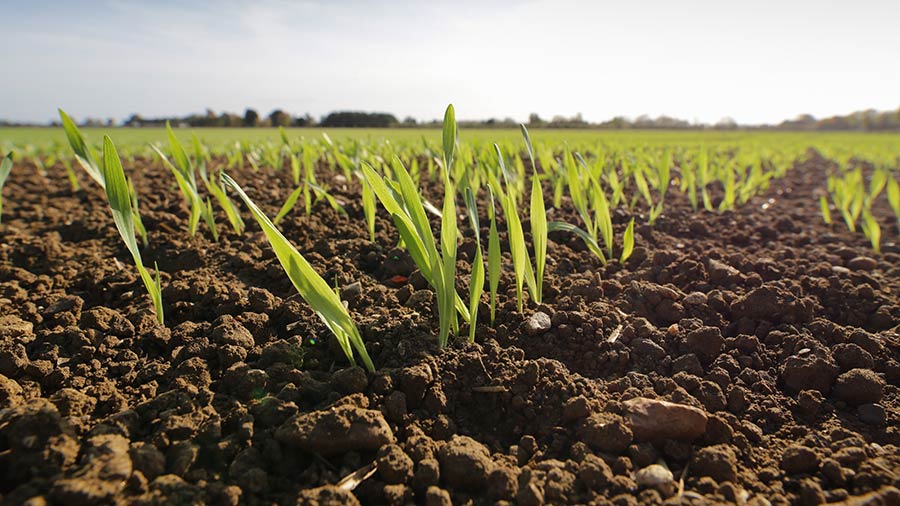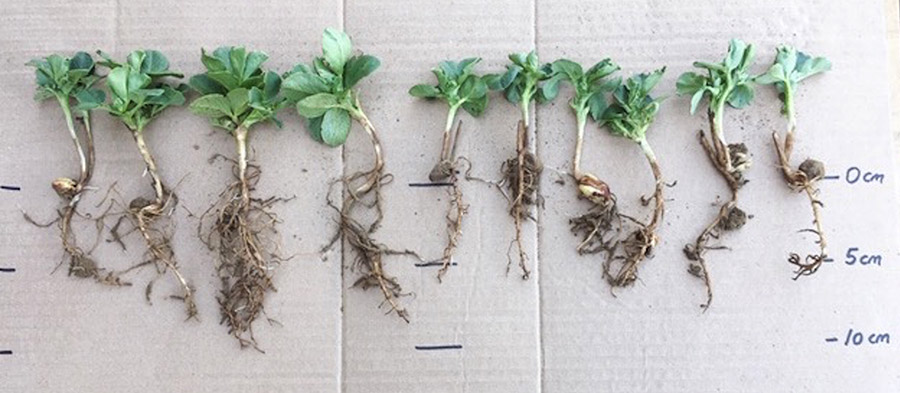New soil treatment slashes phosphate fertiliser bills
 © Tim Scrivener
© Tim Scrivener Farmers can slash their phosphorus fertiliser bills and benefit the environment thanks to a new product that converts unavailable phosphate into a crop-available form.
Many high calcium or high pH soils might appear to have adequate P indexes, but most of this essential nutrient is bound up as insoluble calcium phosphate and is not available to the crop, says Chris Martin, Agrovista’s head of soil.
See also: 4 cultural techniques for controlling BYDV in cereals
“Phosphorus is critical for crop growth, playing a key role in cell biochemical functions and cell division. It is required in relatively large quantities during important plant development phases such as seed germination and rooting, as well as flowering and seed production.”
Applying bagged fertiliser can help meet demands, but this can be expensive and inefficient. “Depending on soil type and pH, as much as 90% of P applied in this form can become insoluble and locked up, often within days,” says Mr Martin.
“If you can make use of what’s already in the soil, you can make significant reductions in both inputs and costs. By applying Phosphorus Liberator, growers can free up significant amounts of P, reducing fertiliser bills and improving efficiency from applied phosphate fertilisers and manures.”
The product contains carboxylic acid, which solubilises calcium phosphate. This keeps the phosphate in solution, making it available for uptake through plant roots, he explains.
Treatment is easy as it can be applied through a conventional sprayer pre-drilling or tank-mixed with a wide range of pre-emergence herbicides at rates tailored to soil P levels and crop need.
Trial results
Assessments carried out on a range of crops this season have reinforced earlier work demonstrating the value of Phosphorus Liberator.
Last autumn, oilseed rape plots treated at 10 litres/ha had twice the root weight compared with those treated with diammonium phosphate alone at 165 kg/ha, thanks to a 61% uplift in plant numbers and a 31% increase in individual plant root weights.
In winter wheat, a crop assessment conducted in Suffolk in January 2020 showed a dramatic increase in rooting (see table below). The effect was still evident the following April.
Tiller assessment showed the treated plots (5 litres/ha and 10 litres/ha respectively) had 1.56 and 1.62 tillers per plant excluding the main stem, compared with 1.13 for the untreated. Where compound P had also been used, the figures were 1.84, 1.88 and 1.34 tillers respectively.
Mr Martin points out that spring beans showed an even bigger increase overall. Plant numbers rose by 69% and foliar and root weights by 133% and 122%, respectively when treated with the product.
Sping beans growth development untreated v treated

Untreated spring beans © Agrovista

Treated spring beans © Agrovista
Winter wheat – crop assessment 20 January 2020 |
|||||
|
Untreated |
Phosphorus Liberator (5 litres/ha) |
Phosphorus Liberator (10 litres/ha) |
Percentage increase (5 litres/ha) |
Percentage increase (10 litres/ha) |
|
|
Average plant weight (g) |
0.264 |
0.292 |
0.306 |
10.6 |
15.9 |
|
Average root weight (g) |
0.07 |
0.10 |
0.14 |
42.8 |
100 |
| *Applied 19 November 2019 peri/early post emergence (due to wet conditions). Site: Flixton, Suffolk | |||||

